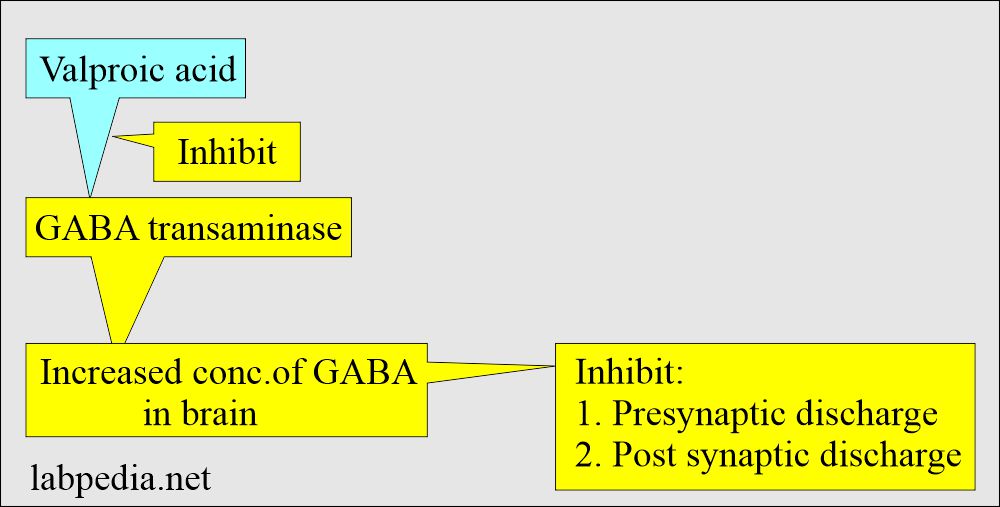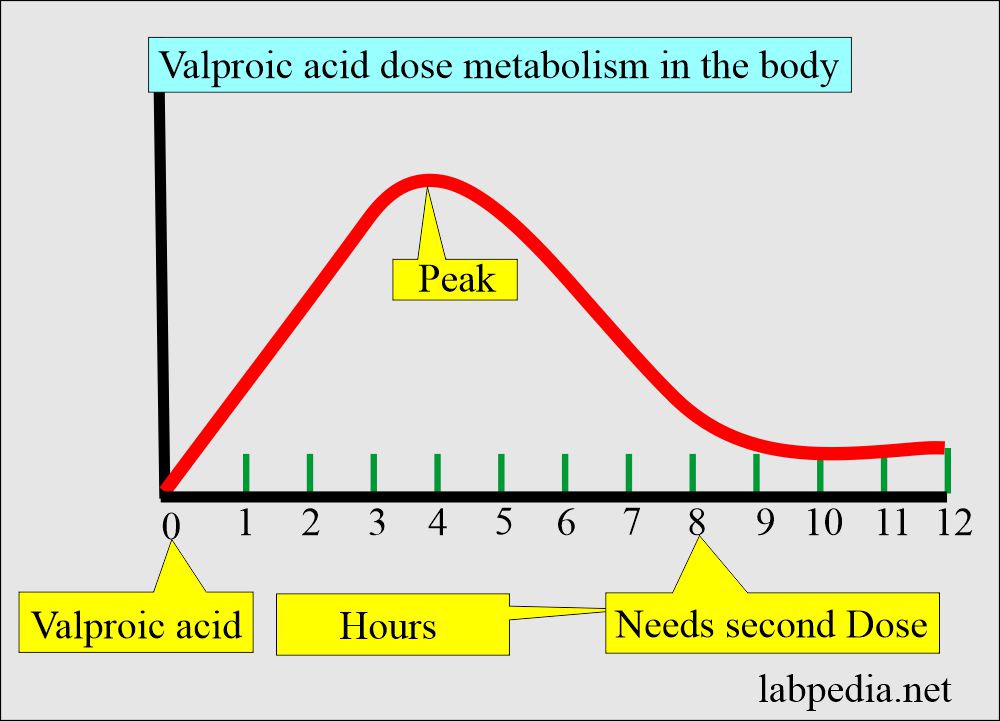Valproic acid (Valproate level)
Valproic acid
What sample is needed for Valproic acid estimation?
- This is done on the serum of patients (mostly epileptics).
- The best time is before the second dose.
- The other best time is early in the morning.
What are the Indications for Valproic acid?
- This is done on patients who are on Valproic acid drug treatment.
- This monitors the dose and prevents toxic levels.
- This is done in the patient with Epilepsy.
What are the complications of Valproic acid (antiepileptic drug)?
- Valproate level (Valproic acid) may cause serious or life-threatening damage to the liver.
- Anticonvulsant drugs like phenobarbital were used for epilepsy, and this may lead to:
- Drowsiness.
- Fatigue.
- Depression.
- Decreased mental capacity.
- Valproic acid (Valproate level) has a great risk in children under the age of 2 years.
What is the pathophysiology of Valproic acid (Valproate)?
- Valproic acid absorption from GIT is rapid and complete.
- It is eliminated by liver metabolism.
- Circulating valproic acid is highly protein-bound, almost 93%.
- The percentage of protein-bound decreases in:
- Renal failure.
- In late liver diseases.
- Drugs that compete for their binding sites.
- Valproic acid is used to control tonic-clonic and partial seizures.
- Avoid other medications when the patient is taking valproic acid.
What is the mechanism of valproic acid (Valproate level)?
- It inhibits GABA transaminase, resulting in an increase in the concentration of GABA in the brain.
- GABA is a potent inhibitor of presynaptic and postsynaptic discharge in the brain.
- This acid modulates the synaptic sodium by prolonging inactivation, decreasing the neurons’ ability to respond at high frequency.
- Valproic acid is rapidly absorbed from the GIT after oral intake.
- The peak level is 1 to 4 hours after the oral dose.
- The half-life is 16 hours but decreases to 12 hours after the therapy.
- In the case of long-term therapy, it decreases in 8 hours.
What are the complications of Valproic acid?
- Valproic acid dose >100 µg /mL is hepatotoxic and leads to acute hepatic encephalopathy.
- The dose should be adjusted from 40 µg /mL to 100 µg /mL.
- The best time to get a blood sample is before the next dose.
- The patient may develop complications:
- Excessive tiredness,
- There is a lack of energy.
- The patient may develop weakness.
- There is stomach pain.
- There is a loss of appetite, nausea, vomiting, or swelling of the face.
- This may cause damage to the pancreas.
- Level >200 µg/mL may show:
- Pancreatitis.
- Hallucination.
- Raised ammonia level (Hyperammonemia).
- Hepatic dysfunction may happen even at a therapeutic level. So, regularly check the liver function tests.
- Initially, liver functions should be checked frequently in the first 6 months of therapy.
- Valproic acid can cause birth defects in pregnant women.
- The goal of epilepsy treatment is:
- Seizure control.
- Epilepsy control.
- Ultimately, the reversal of the disease.
- Evaluation of the free or nonbound fraction is a more reliable index of a therapeutic or toxic dose.
Another source 2
Toxic level = >100 µg/mL.
Questions and answers:
Question 1: What is the peak level of valproic acid?
Question 2: What is the indication of valproic acid?


